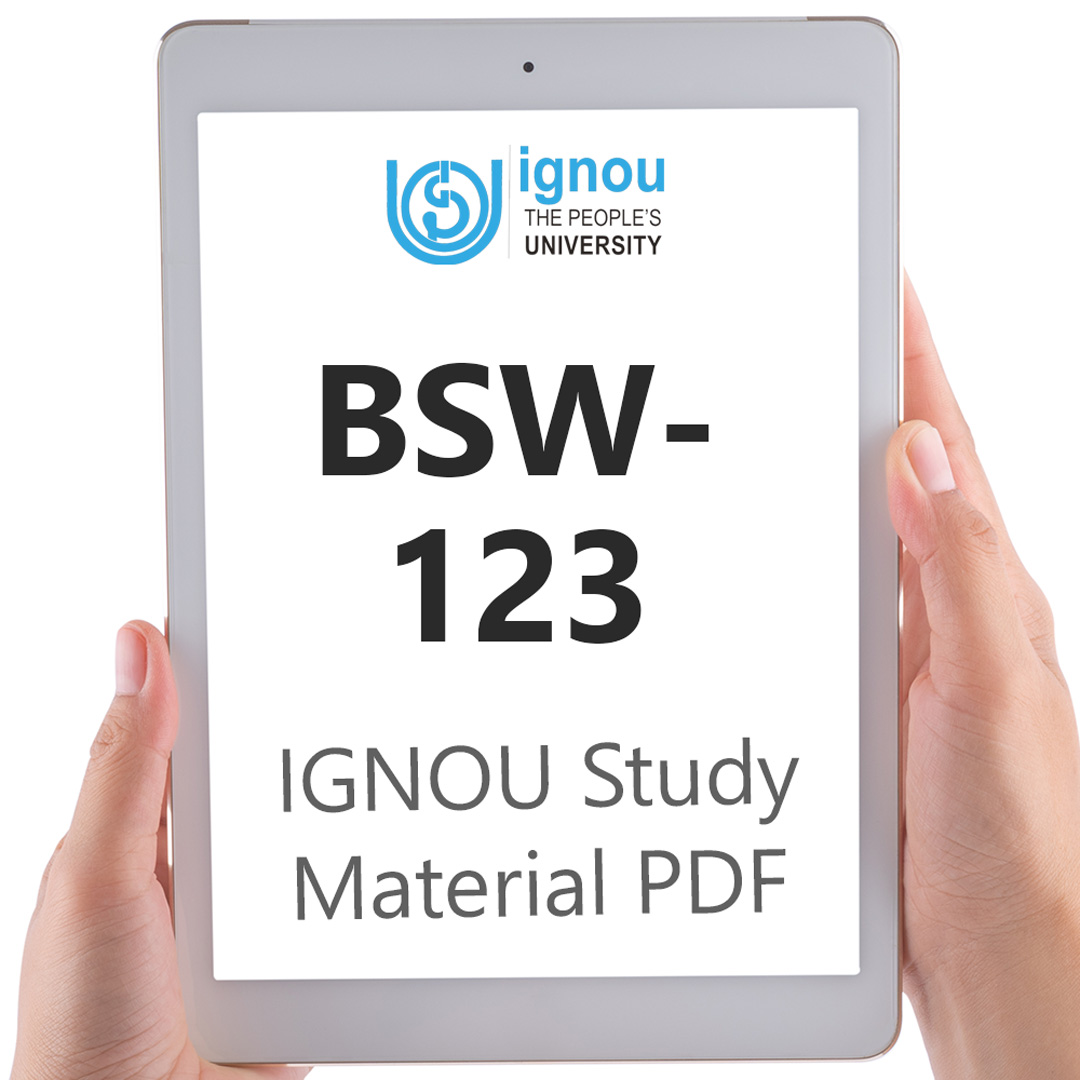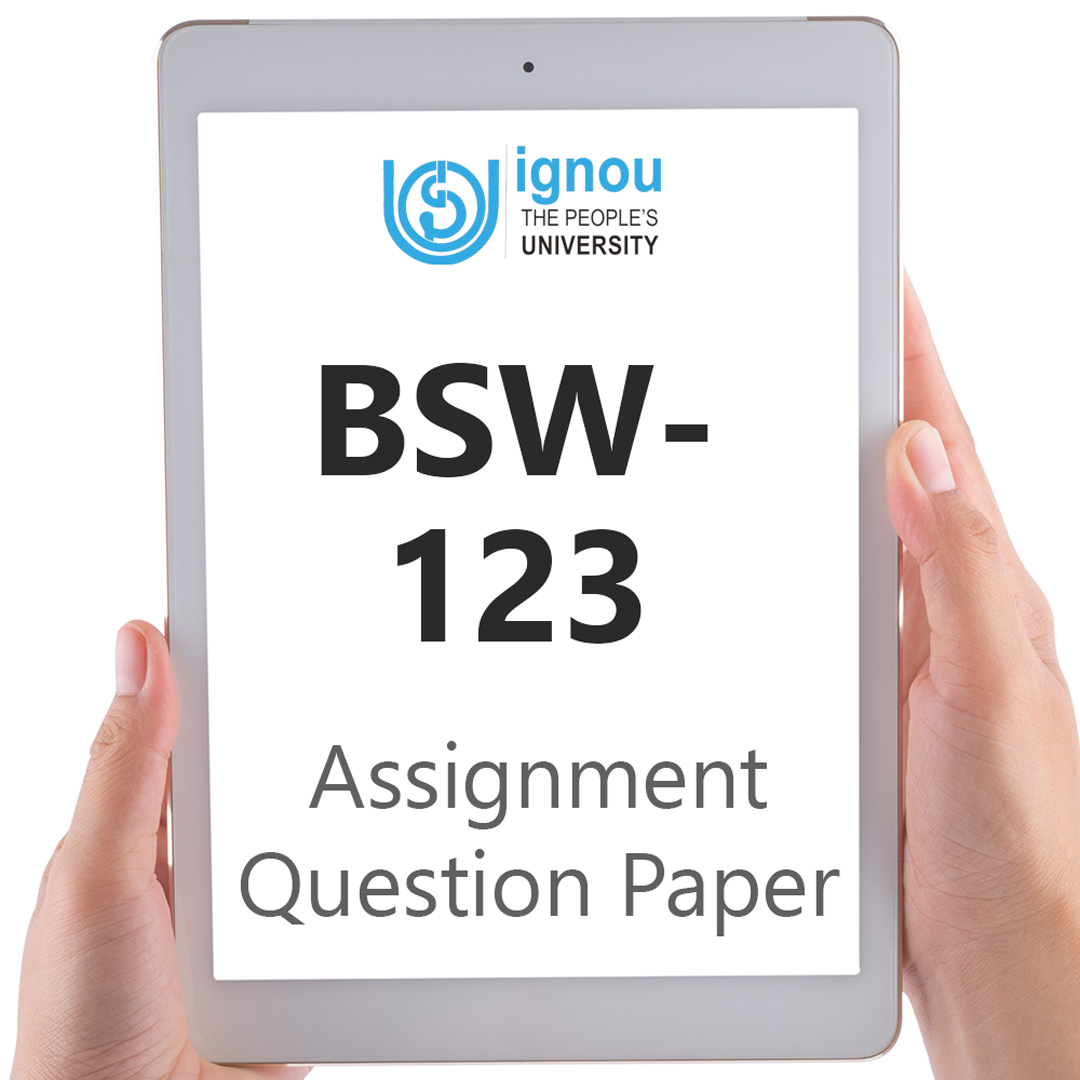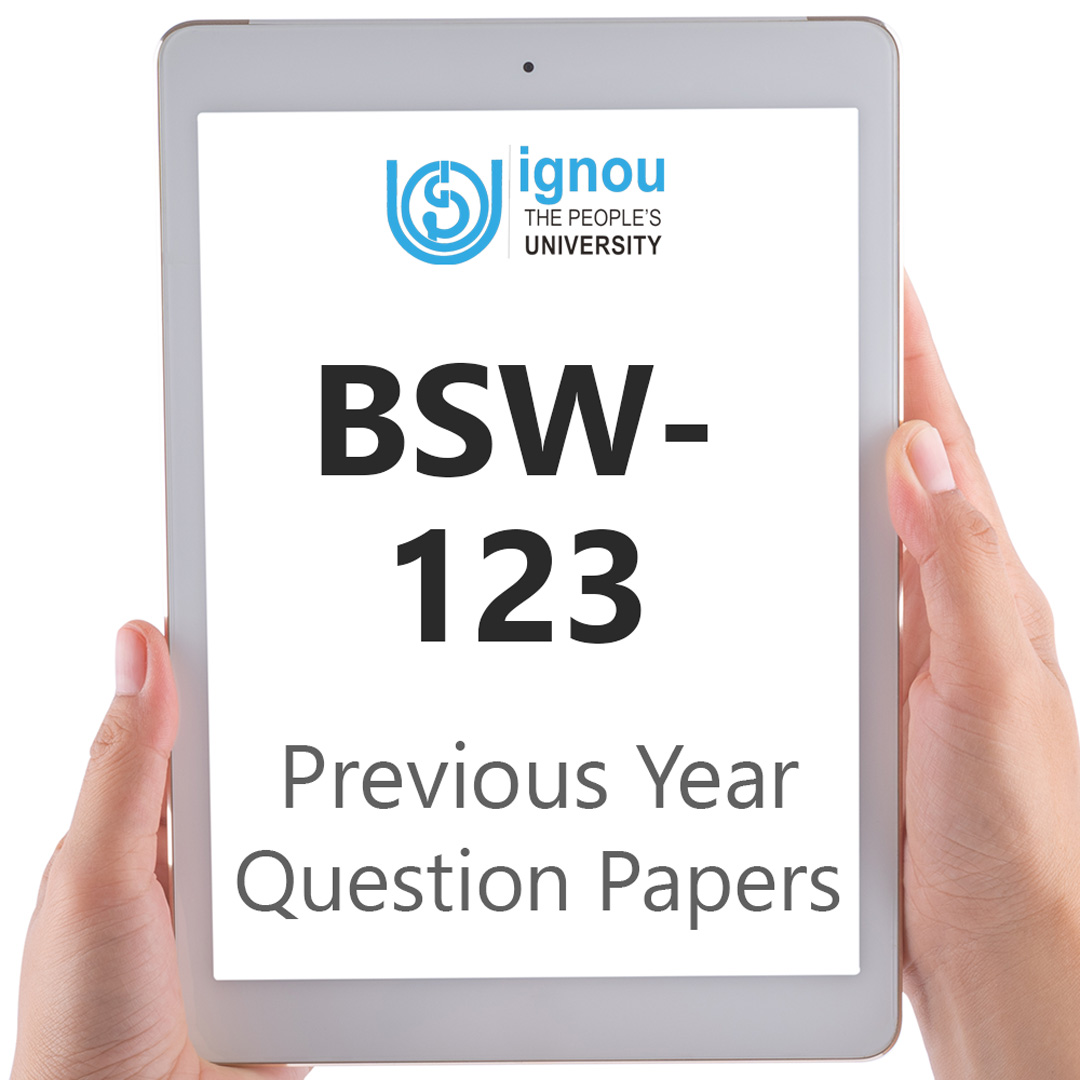If you are looking for BSW-123 IGNOU Solved Assignment solution for the subject Community Organisation and Communication, you have come to the right place. BSW-123 solution on this page applies to 2022-23 session students studying in BSWG courses of IGNOU.
BSW-123 Solved Assignment Solution by Gyaniversity
Assignment Code: BSW-123/TMA/2022-23
Course Code: BSW-123
Assignment Name: Community Organization and Communication
Year: 2022-2023
Verification Status: Verified by Professor
Answer any five of the following questions in about 300 words each. 20x5
Q1) Define community organization. Enlist the principles of community organization.
Ans) Community organisations can mean a variety of things. It is frequently used interchangeably with community development, community mobilisation, and community work. The word refers to a strategy of social work to intervene in the community for its development in the context of the social work profession in India.
The principles of community organization are as follows:
Community organisation is practical, not ideal. It helps people live happy, fulfilled lives. It's an intervention method that encourages a community of people, groups, or organisations to solve its needs and concerns.
Community organisations promote democratic principles and community cohesion by removing disruptive factors that threaten community welfare and democratic institutions.
Community Identity is the community must be the worker's client. He or she may work with multiple communities.
Needs research: Localize community organisation programmes. Before starting a community initiative, gather facts and analyse needs.
Before generating additional social welfare resources or services, current ones should be maximised. In the lack of resources or services, the worker must mobilise community, government, NGOs, etc.
Participatory planning is essential throughout the community organisation process. Planning in community organisations is a continuous process of implementation and review.
Community organising emphasises self-help. From the standpoint of democratic principle and viability, community members' engagement throughout the community organisation process should be promoted.
Honour the community's self-determination. Community organisation workers provide technical skills, support, and innovative leadership to individuals, groups, and organisations.
Coordination of efforts and a collaborative atmosphere that collaboration, not rivalry, should drive community organisation practises.
Indigenous leadership respect and participation. According to reports, community organisations require member participation.
Limited power or force community organisation may require force or authority.
Service and programme adaptability that is key to community organisation. Social welfare programmes and organisations must consider communal challenges and needs.
Continuous participant assessment that community-based programmes are implemented, they must be evaluated.
Q2) Explain the models of community organization and discuss its relevance in Indian context.
Ans) It serves as a lens through which one can view the nuanced reality. A model is a condensed representation of a complicated situation. Models provide us a clear knowledge of what would happen and act as a reference for the job. They include methods for realising a vision as well as the proper measures to follow to get there. Some models develop as a result of certain shift philosophies, while others do so in response to actual circumstances. There are three primary models of community organisation that Jack Rothman has presented as follows:
Model A: Locality Development
Working with community groups is done using the locality development concept. The settlement houses used to use it. Here, community building is the main point of interest. The key components of the method are participant education and leadership development. The entire community or a specific segment of it is the major focus of this strategy. The fundamental idea is that communities share certain wants and interests, and that by recognising these requirements and cooperating democratically, individuals may take the necessary actions to raise the standard of living.
Model B: Social Planning
Social planning refers to the form of community work where a person or organisation evaluates the welfare needs and available services in the region and offers a potential blueprint for a more effective delivery of services. It is concerned with issues including housing, education, health, childcare, and other social issues. It wants to have an impact on a lot of people. The community planner collaborates with the government in that position and is frequently linked to the local social order.
Model C: Social Action
In this kind of community organising, the organiser makes use of every available tool to put pressure on the ruling class to accede to demands. Organizers' roles may change depending on the problems they take on. The position could be that of a broker, negotiator, activist, advocate, or agitator. It's a procedure. There are various steps to this organising process. As a result, the organizer's function will alter in accordance with the duties that are expected of them in various social contexts. The 1960s saw widespread adoption of this model. This has been utilised as a way to address the socioeconomic issues facing the country and redistribute power and resources to the underprivileged. Community organisation can benefit greatly from using social action as a model.
Q3) What are the important tools of advocacy for social workers?
Ans) Strategies for advocacy offer effective instruments for combating social injustice. The following is a list of some advocacy tactics that social workers might use:
Public Interest Litigation
Public interest litigation has recently developed into a very important weapon for social advocacy. It is particularly used when aid is sought from government bodies. According to the Indian Constitution, anyone may petition the Supreme Court or a High Court on behalf of the common people.
After reading a newspaper article on the deplorable conditions of prisoners awaiting trial who were being held in the jails of Patna and Muzaffarpur in 1979, Supreme Court attorney Kapila Hingorani filed a writ of habeas corpus on behalf of the detainees. Rules governing locus standi the right or capacity to bring an action and present in court were tougher at the period; only the individual or a close relative may bring an action.
Legal Aid
According to Article 39A of the Indian Constitution, the State must ensure that the functioning of the legal system promotes justice on the basis of equal opportunity and, in particular, must provide free legal aid through appropriate legislation or programmes or in any other way to ensure that no citizen is denied the opportunity to secure justice due to their financial situation or another type of disability. Legal Services Authorities Act, 1987 was passed in accordance with Article 39A to provide a legal foundation for legal assistance programmes across the nation in a standardised manner. On November 9th, 1995, this law was ultimately put into effect.
Social Media
It would not be an exaggeration to argue that social media is the glue keeping people connected in today's technologically advanced world. The fastest way to spread advocacy campaigns to more individuals and more locations is through social media. On the internet, information spreads exponentially, giving it a tremendously broad reach. Social media has evolved into a movement's main organising force. People can share media links, videos, and other information on social media and networking websites to engage in debates, send information to others, and discuss ideas.
Advocacy/Pressure groups
Through their diverse activities, advocacy groups, such as non-governmental organisations and forums established at the local, national, or worldwide level, assist the public good. They mention matters of public concern, participate in the drafting of laws, shape policies, oversee their effective implementation, conduct research, hold public hearings, put pressure on those in charge of carrying out their duties to do so, and inspire others to volunteer in the community, among other things.
Q4) Explain the nature and scope of PIL and its relationship with other methods of Social Work.
Ans) A legal action brought in a court of law to uphold the public interest or general interest in which the general public or a class of the community has a financial interest or another interest that could have an impact on their legal rights or obligations is known as a public interest litigation.
Nature of PIL
PIL allows the impoverished to seek legal remedies for wrongdoings. Justice V.R. Krishna Iyer says PIL is a way to get justice and address public issues in court. According to Justice P.N. Bhagwati, "PIL is not adversarial litigation, but a challenge and an opportunity to the Government and its officers to make fundamental human rights meaningful to underprivileged and vulnerable sections of the community and to ensure them social and economic justice, which is the signature tune of our Constitution."
Scope of PIL
Through judicial activism, the Supreme Court spawned public interest lawsuits. It protects the rights and interests of less fortunate and weaker members of society who are subjected to social, economic, or other oppression and cannot go to court alone. It was established to provide social and economic fairness for weaker groups. Public interest litigation isn't conflict-free. Public interest lawsuit aims to protect the legal and constitutional rights of underprivileged, downtrodden, misinformed, socially, or poor people.
PIL and its Relationship With Other Methods of Social Work
Casework, group work, community organisation, social welfare administration, social research, and social action emerged. These strategies are used to address difficulties affecting individuals, families, communities, and society.
Group Work: Social group work helps people improve their social functioning through purposeful group experiences and cope with personal, group, or communal challenges. This strategy relies on social workers. Social workers identify problems and help impacted people find solutions.
Community Organization: Community-based techniques supplement others. Community organisation is a process in which a community identifies its needs or goals, gives them priority, develops confidence and will to work on them, and finds resources to cope with them, extending and developing cooperative and collaborative attitudes and practises.
Social Action: Social Action provides mass-solutions. Social action helps many with similar illnesses faster. Social action and social legislation promote justice, welfare, and development. Social action helps pass, repeal, and implement new and old laws.
Social Welfare Administration: Philanthropic, religious, and charitable groups implement social policies, programmes, and laws to help the needy. In a recent judgement, the Supreme Court of India ruled that slum dwellers occupy a huge portion of public land.
Social Work Research: Social workers learn knowledge and skills through research-based practise. Social work research examines intervention and treatment effectiveness. It determines which tactics or treatments support social work goals.
Q5) Describe the communication process and models of communication.
Ans) The road map to achieving effective communication is the communication process. The sharing of a shared meaning between the sender and the recipient occurs during the communication process. People that adhere to the communication process will have the chance to improve their productivity in all facets of their work. Understanding comes through good communication.
Four essential elements make up the communication process. These elements consist of encoding, transmission medium, decoding, and feedback. Two other components are involved in the process, and those two additional factors are represented by the sender and the recipient. The sender initiates contact, which concludes with the recipient.
Communication Models
The Laswell model, "Who says What in Which Channel to Whom, with What Effect," may be the most frequently mentioned model of the communication process. It concisely conveys the essence of communication. It is a linear model based on communicators. According to Laswell, communication might be one-way or two-way. Instead of the meaning, he is more concerned with the effect.
The linear process model-based ideas from the past have been developed into Gerbner's model. It helps us address concerns of perception and meaning because it connects the message to the "world" that it is "about." It also sees communication as taking place in two alternating dimensions: the perceptual or receptive dimension and the communicative or means and control dimension. Gerbner's paradigm excels at culturally localising meaning. Culture shapes how we perceive the world. As a result, it aids in explaining why various audiences may understand the same message in different ways.
The source-message-channel-receiver model that Berlo popularised in his seminal book The Process of Communication is still a helpful way to understand how communication works. The communication model's six components the source, the encoder, the message, the channel, the decoder, and the communication receiver are introduced. He asserts that these shouldn't be thought of as distinct objects, beings, or individuals. They are the titles of the behaviours that must be carried out in order for communication to take place.





